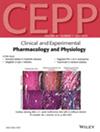Mapping Nutrition and Tuberculosis Research: Insights From Bibliometric Perspective
Abstract
Background
Malnutrition and tuberculosis form a mutually reinforcing vicious cycle. While nutritional interventions are crucial for TB management, the knowledge structure and research frontiers remain insufficiently characterised.
Objective
To systematically analyse the structure, trajectory and frontiers of research in the nutrition-tuberculosis field using bibliometric methods.
Methods
Relevant literature published since 2007 was retrieved from the Web of Science Core Collection database. CiteSpace was employed to perform multidimensional analyses, including co-occurrence, cluster timeline visualisation and burst detection for keywords, citations and authors, thereby constructing knowledge maps and identifying key nodes through network centrality metrics.
Results
A total of 4502 bibliographic records were analysed. Key findings include: (1) Vitamin D occupies a central position (frequency 326, centrality 70), bridging basic immune mechanisms and clinical applications; (2) research paradigms evolved from molecular mechanism exploration (2007–2012), through clinical translation validation (2011–2019), to systems biology integration (2019–2025); (3) gut microbiota (burst strength 11.73) and (fatty) acids emerged as frontiers; (4) diabetes–tuberculosis comorbidity revealed the complexity of metabolic-immune interaction networks and (5) high citation frequency of WHO reports indicates a pressing need for translating research into policy.
Conclusions
Nutrition–tuberculosis research is shifting from single-nutrient studies towards integrated ‘nutrition–microbiome–metabolism–immunity’ networks. Vitamin D remains central, but future priorities should focus on precision interventions, multi-omics integration and translation from mechanism to practice, especially for high-risk groups.


 求助内容:
求助内容: 应助结果提醒方式:
应助结果提醒方式:


